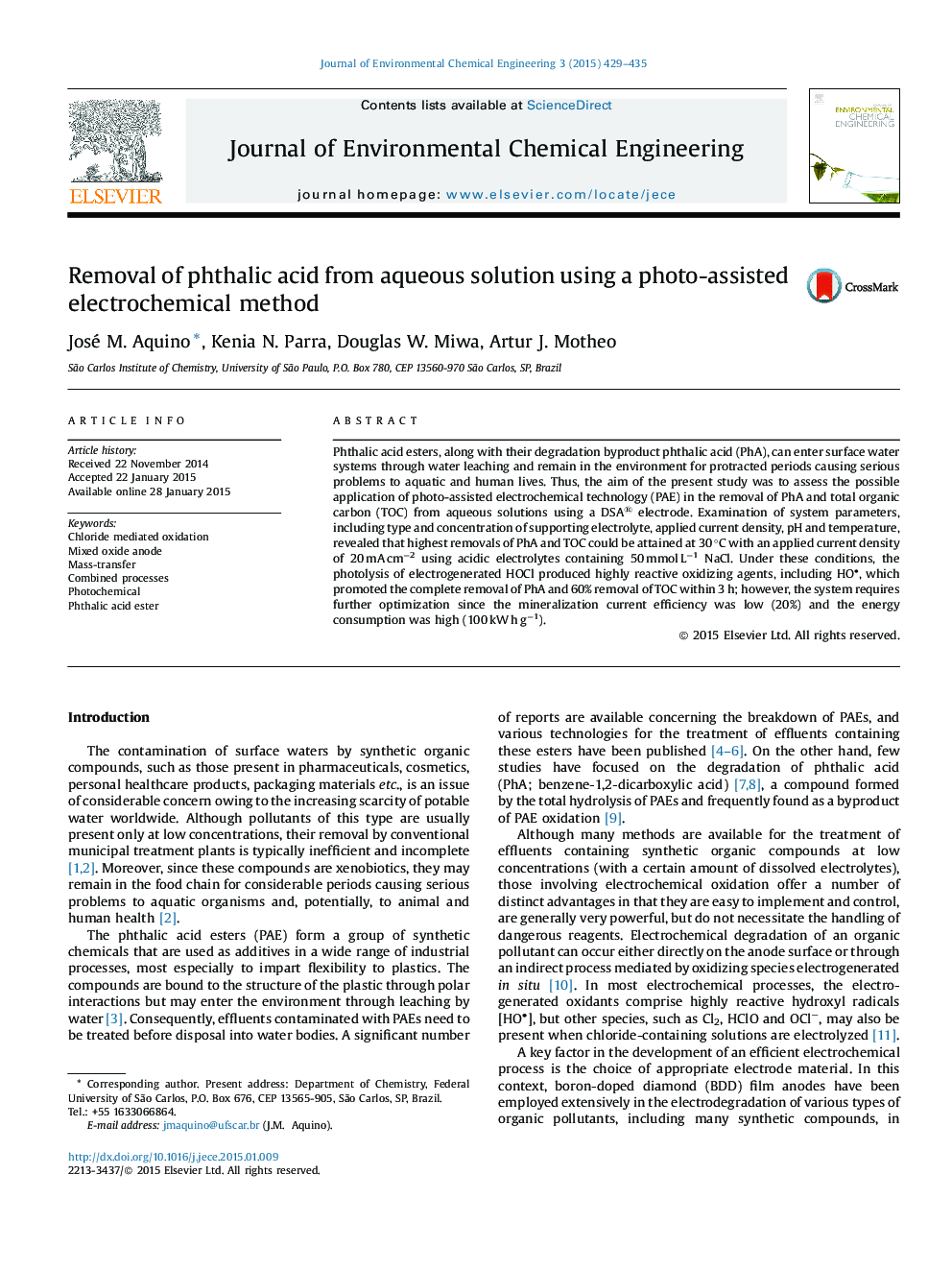| Article ID | Journal | Published Year | Pages | File Type |
|---|---|---|---|---|
| 222427 | Journal of Environmental Chemical Engineering | 2015 | 7 Pages |
Phthalic acid esters, along with their degradation byproduct phthalic acid (PhA), can enter surface water systems through water leaching and remain in the environment for protracted periods causing serious problems to aquatic and human lives. Thus, the aim of the present study was to assess the possible application of photo-assisted electrochemical technology (PAE) in the removal of PhA and total organic carbon (TOC) from aqueous solutions using a DSA® electrode. Examination of system parameters, including type and concentration of supporting electrolyte, applied current density, pH and temperature, revealed that highest removals of PhA and TOC could be attained at 30 °C with an applied current density of 20 mA cm−2 using acidic electrolytes containing 50 mmol L−1 NaCl. Under these conditions, the photolysis of electrogenerated HOCl produced highly reactive oxidizing agents, including HO, which promoted the complete removal of PhA and 60% removal of TOC within 3 h; however, the system requires further optimization since the mineralization current efficiency was low (20%) and the energy consumption was high (100 kW h g−1).
